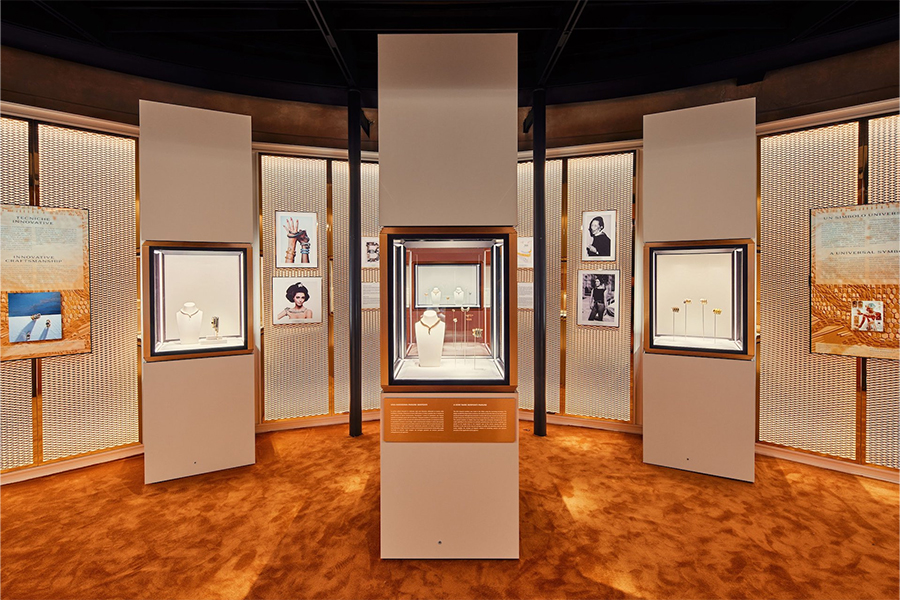Report Recap: How Value Systems In The Luxury Market Are Shifting
Presented in Milan last Tuesday, The Altagamma-Bain Worldwide Luxury Market Monitor 2023 reveals an appetite for experience-led and purpose-driven brands, with spaces to match.
Despite uncertain macroeconomic and geopolitical conditions, the presentation of Altagamma-Bain’s study of the luxury goods market worldwide – titled Long Live Luxury – Converge to Expand Through Turbulence – was optimistic, highlighting the market’s resiliency in turbulent times. As the Monitor outcomes revealed, the growth rate of the (€1.5 trillion) luxury market in 2023 was in line with that of 2022. But there was a notable difference, explained Claudia D’Arpizio, senior partner of Bain & Company: ‘There is a rebalancing amongst different categories, with a more than proportional growth of experience.’ Her words are reflected by statistics showing positive numbers for experience-driven businesses and goods such as cruises, fine dining and luxury hotels.
Experiences trump products
The trend of customers prioritizing experiences over products and services is something we’ve reported on broadly. And, as the studies of Altagamma and Bain & Company show, the movement is heavily impacting the luxury market too. As consumers are expanding their perspective on luxury, their spending is following suit. Looking at high-quality design furniture, for example, a growth normalization is reported, following post-pandemic hypergrowth. This slowdown in growth can be explained by the broad real estate market cooling down, but also by discretionary spending rebalancing towards lived-in experiences. ‘This is an industry which really benefited from the time of COVID,’ D’Arpizio said. ‘People were really careful about their homes and were cocooning.’

To celebrate the 75th anniversary of its Serpenti collection, Altagamma member Bulgari opened the exhibition Serpenti: 75 Years of Infinite Tales at the Dazio di Levante in Milan.
Fuelled by a sense of urgency for social life and travels, spending on experiences is now recovering to historical highs. Developments in the luxury hotels sector are even surpassing pre-pandemic levels. This is propelled by an ‘increase of occupancy and sustained ADR pushing upward the customer expectations’, paired with an ‘intense surge for consumer zeal for unique and transformative experiences,’ as the Bain & Company presentation stated. Tourist flows in general are picking back up, boosting luxury touristic purchases and reigniting travel retail.
Gen Z as the luxury market’s key influencer
While Altagamma and Bain & Company report that Gen X and Y still represent the bulk of luxury purchases, they point to Gen Z as having the ‘power of influence’ on the luxury market and its future evolution. ‘They are redefining the system of values in this sector,’ noted Federica Levato, fellow senior partner at Bain & Company. Showing a pyramid of consumer demands, she continued by explaining that the older generations, such as the Generation X and the Baby Boomers are looking for what she calls the founding values of the luxury sector: quality, excellence, aspiration, craftsmanship and heritage. Younger customers like millennials, on the other hand, tend to look for additional emotional values and 360-degree experiences. This preference has increased with Gen Z. They demand a sense of purpose and inspiration from the sector. ‘Gen Z is on a quest for meaning and ‘pushing a significant shift toward purposeful purchase,’ Levato adds. The multigenerational complexity on the market means that brands will need to ‘play ambidextrously to serve different needs across the consumer base.’

Set inside a repurposed Boeing 747 jet in Malaysia, Coach Airways provided visitors with an immersive retail experience through its holistic, nostalgic spatial narrative.
Monobrand versus multi-brand retailers
The unprecedented quest for in-store experiences and what Altagamma-Bain calls transhuman touch – a frictionless experience and constant dialogue between consumers and brands – is strengthening the position of monobrand channels in the personal luxury goods market. ‘We’ve seen a natural acceleration of physical monobrand stores over the last years,’ said Levato. ‘And their role is changing. Their nature is evolving. They’re no longer just transactional places, but locations for 360-degree brand experiences.’
Department and speciality stores, however, are struggling, as they are dealing with trembling value proposition, high stock levels, and markdowns. As customers are becoming more knowledgeable, more opinionated, increasingly connected and directly engaged, brands benefit from narrowing the gap between them and consumers.

Exploring the power of AI in the service of luxury retail, Zegna launched its digital ecosystem Zegna X to provide more personalized shopping experiences. The service went live in an exclusive room at its Milan Montenapoleone flagship store.
Catching up on technology
When it comes to generative AI, Altagamma-Bain urges brands to start approaching AI with a holistic and future-back strategy, or else risk lagging behind. Some of the key opportunities of AI signaled by the company are ‘hyper-personalization of the frontend and efficiency and automation of the backend,’ ‘We hear a lot about performance improvement and how to free up resources to dedicate them to consumer contact,’ shared D’Arpizio. ‘Artificial intelligence is certainly going to be one of the factors that will help us navigate the future, to understand consumers and to get rid of some less strategic activities to save time and efforts for in-person client contact and activities.’
Source: Frameweb




